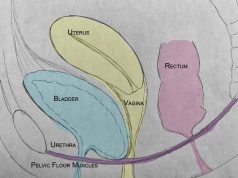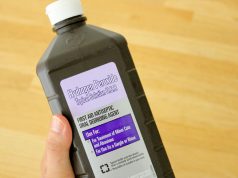Buildings that are over 50 years old were typically built using the materials that were available locally. Stone such as sandstone, granite, limestone, marble, brick and local varieties of timber were the most common building materials.
Brick is considered an artificial stone and the earliest types of bricks were of two common varieties – burnt clay bricks made from soft and plastic surface deposits to hard mudstone, shales and marls and even some of the softer varieties of slate; and, the calcium silicate bricks made from silica sand, lime and water, or crushed siliceous rock.
Static Restoration Technique
Static restoration is one of three restoration techniques (see related article on How To Restore Old Buildings by the author). Static restoration involves preservation treatment of the materials. Some static restoration methods are mechanical cleaning with steel brushes, repair or re-structuring and preservation actions such as waterproofing, dampproofing, moss repellant and other chemical treatments.
Determine Nature of the Building Material
Before the most appropriate treatment for the material can be recommended, it is important to determine the factors causing deterioration. The extent of deterioration depends on the degree of exposure to the factors of deterioration. An exposed structure has a greater risk of deteriorating quickly than a sheltered one.
Preservation treatment depends on the nature and classification of the material, whether it is organic e.g. soft and hard timber varieties or in-organic e.g. siliceous or carbonaceous stone or brick.
The recommended treatment for wood is replacement (dynamic restoration).The recommended treatment for stone depends on the nature and classification of stone i.e siliceous or carbonaceous, which can be identified from visual examination, physical tests, chemical analysis or microscopic analysis.
Determine Cause and Extent of Deterioration
Deterioration may be caused by intrinsic i.e physical defects or extrinsic i.e water, climatic conditions, atmospheric pollution. If deterioration is caused by intrinsic factors, a dynamic restoration by replacement or reconstruction, is recommended.
Climatic conditions can cause chemical dis-integration e.g. cracks, blisters warping, swelling; and, biological attack e.g vegetation, growth of micro-organisms such as algae, fungi, termites.
Water is considered the major cause of material deterioration from penetration of groundwater (capillary rise). Water (water with a high salt or acid content) can cause metals to corrode and swell.
Stone can also deteriorate from the solvent action (chemical attack) of water and its acidic impurities. Pollutants introduced into the atmosphere by automotive combustion, fossil fuels such as coal and natural gas deposited into walls and roofs of buildings are also deterioration agents.
Apply Appropriate Chemical Treatment
If deterioration is caused by extrinsic factors, a static restoration (chemical treatment), is recommended. Common treatments are:
– EDTA ammonium carbonate to remove black dirt ingrained in stones.
– Distilled water to remove salts in stone.
– Hydrogen peroxide or herbicide to remove organic growth in stones.
– Rinforzante H to consolidate or bind disintegrated materials and improve cohesion of the stone.
– Ethyl silicate (water repellant) for treatment of siliceous stones.
– Waxes, acrylic resins, silicone resins, siliconates to fill gaps and retouch missing parts of materials affected by chemical integration and biological attack.
– Waxes for non-porous calcareous stones (marble).
– Silicone resins dissolved in white spirit to extend durability of stone (approximately 4-10 years).
– Paraffin or micro-crystalline wax mixed with acrylic resins to increase water repellancy.
– Polyethylene glycol for wooden objects that are found in water swollen condition.
– Sodium pentachlorophenate and pentachlorophenol dissolved in a clear volatile hydrocarbon solvent for wooden objects that are going to be exposed to conditions susceptible to attack by organisms.


















